Hollywood disaster films tend to center around one particular type of disaster, whether it be a tornado, an earthquake or a mid-air collision it's usually only one particular issue, but with The Day After Tomorrow, Roland Emmerich took the Global Weather Crisis head-on and gave us a movie filled to the brim with all kinds of calamity, and with that in mind he created a disaster movie that delivered on all fronts...well, mostly a cold front.
The movie starts with a group of scientists, led by the heroic Jack Hall (Dennis Quaid) an American paleoclimatologist who discovers that the melting of polar ice caps has caused a catastrophic change in the ocean currents. The concern here is that this is leading to an instant and drastic climate shift, and results in the northern hemisphere being plunged into a new ice age within days and humanity is left to fight for survival against a relentless storm that brings freezing temperatures, blizzards, and floods. But the burning question that will keep the viewer on the edge of his or her seat isn’t whether or not mankind can survive this artic global shift but in finding out if Dennis Quaid is really "Father of the Year" material.
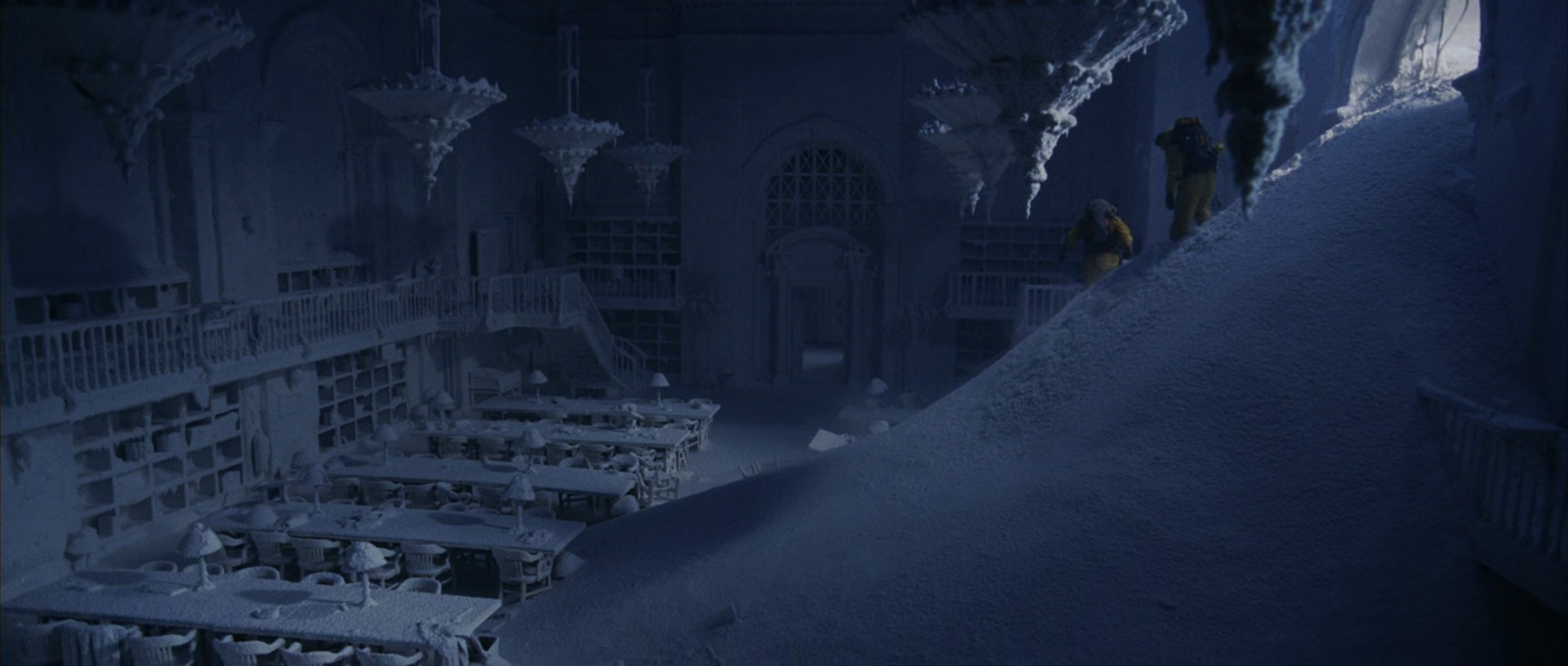 After this, he’ll be allowed to forget his kid’s birthday for at least a year or two.
After this, he’ll be allowed to forget his kid’s birthday for at least a year or two.
Watching disastrous scenarios play out is fun but one of the strengths of the film is its focus on the human element, Emmerich’s screenplay gives us characters that are well-developed and relatable, and their relationships and personal struggles add a certain depth to the story. Dennis Quaid delivers a standout performance as a father desperate to reach his son, Sam (Jake Gyllenhaal), who is trapped along with his friends in a frozen New York City library, and the fact that Quaid’s noble scientist's arctic trek across America turns out to be fatal for his best friend (Jay O. Sanders), well, that is something one must accept as the price to pay for being in a disaster movie. Emmerich is clearly a fan of the disaster genre and he uses the formula to good effect here as he trots out a variety of characters to engage the audience. Not only do we have a heroic climatologist to cheer for but also Terry Rapson (Ian Holm), a Scottish selfless oceanographer who, along with his team, will nobly freeze to death. Then there is Jack’s estranged wife Dr. Lucy Hall (Sela Ward) who stays behind to care for a young cancer patient as the world around them freezes, spending some quality time reading him Peter Pan, and next we have Sam's friend and love interest Laura Chapman (Emmy Rossum) who has to survive both the cold and a case of blood poisoning. True love does have its trials. On the political side of things, we have the Vice President (Kenneth Welsh) as the film’s climate denier, he's kind of the human villain of this story, and then there is the ineffectual President (Perry King) who is allowed to die offscreen so that he can remain useless to the very end. Of course, the central story is all about Dennis Quaid finding his son, the idea of billions dying is pretty much an afterthought.
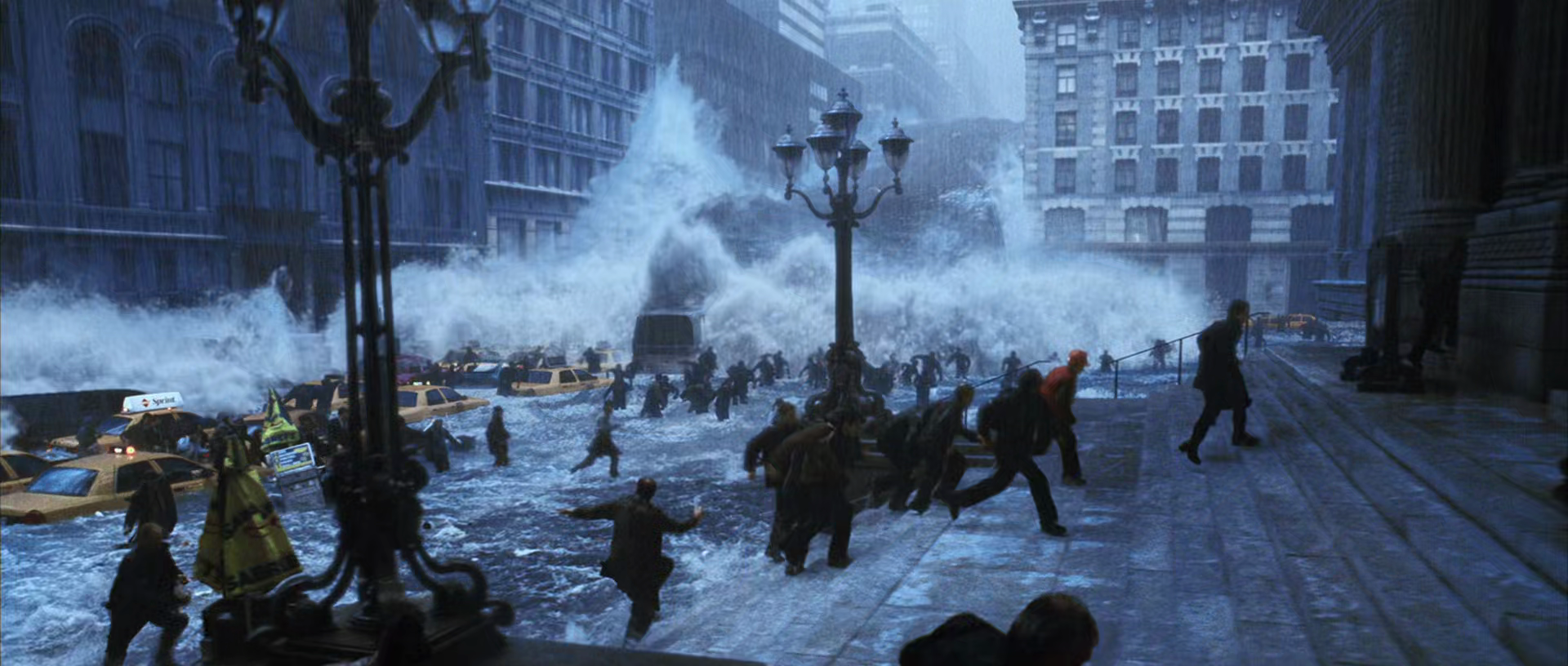 Millions died during this storm surge but at least Jake Gyllenhaal and company survived.
Millions died during this storm surge but at least Jake Gyllenhaal and company survived.
It should be noted that by 2004, computer graphics were starting to make better strides in filmmaking and this particular outing was quite impressive in displaying stunning depictions of giant hailstones, frozen skyscrapers, and massive ships floating down the streets of New York City, unfortunately, the company they farmed out to provide the CGI wolves, who would threaten Jake Gyllenhaal and his pals, were not so great and this resulted in creatures looked like a cross between Wile E. Coyote and something out of Disney’s Peter and The Wolf. When it comes to computer animation one bad effect can cause the audience to stop suspending their disbelief and in a movie dealing with an "overnight ice age" the viewer is already fighting a rather large piece of credulity, so this added problem is not a good thing.
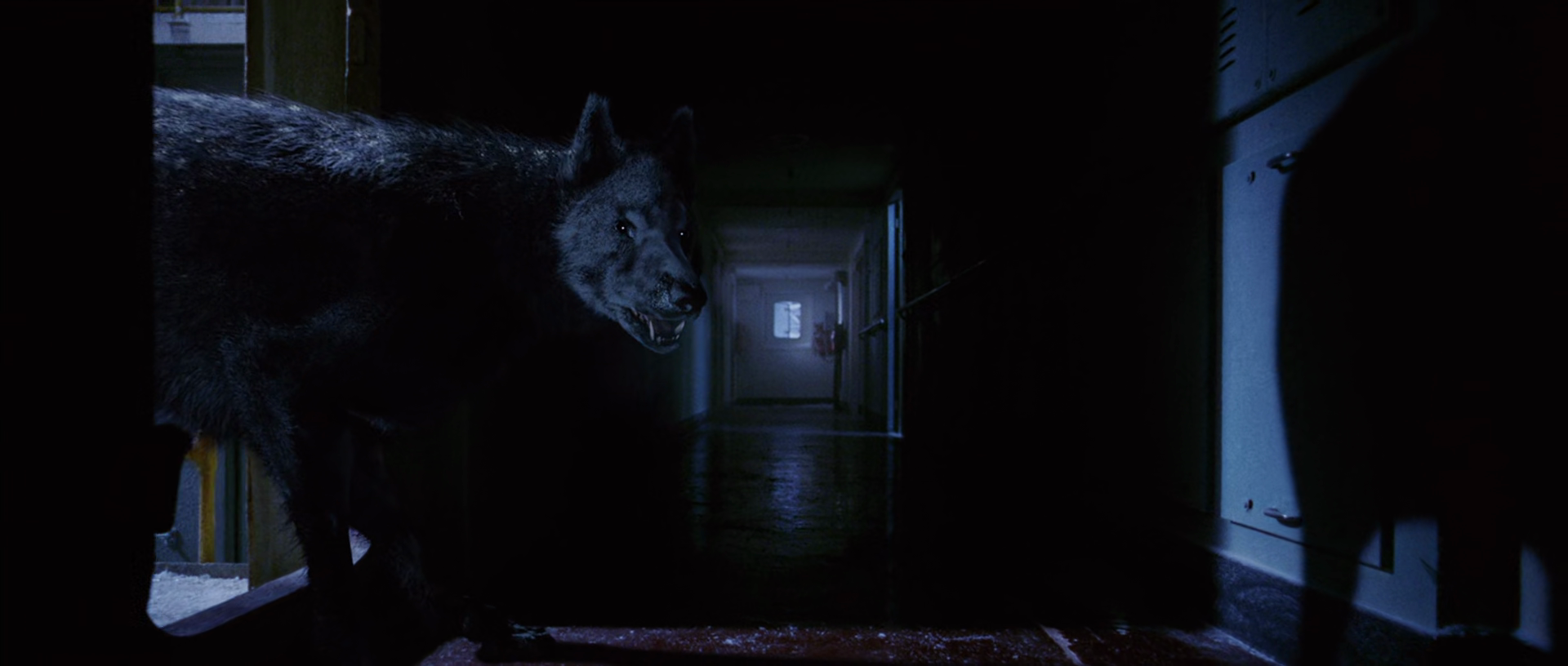 They spent $2 million dollars on the CGI for those wolves.
They spent $2 million dollars on the CGI for those wolves.
I will give writer/director Roland Emmerich props for making a movie that highlights the crisis our planet faces due to the threat of Global Warming, that said, his depictions of catastrophic weather events have about as much scientific validity as what could be found in Michael Bay’s Armageddon – and this movie doesn’t even have Space Madness or Bruce Willis punching an asteroid to back it up – what it does have are some truly remarkable moments of disaster porn, from massive tidal waves to tornadoes ripping through Los Angeles the special effects teams did remarkable work and provided breathtaking visuals, stuff that will keep viewers on the edge of their seats, but just how unrealistic is The Day After Tomorrow in the science category?
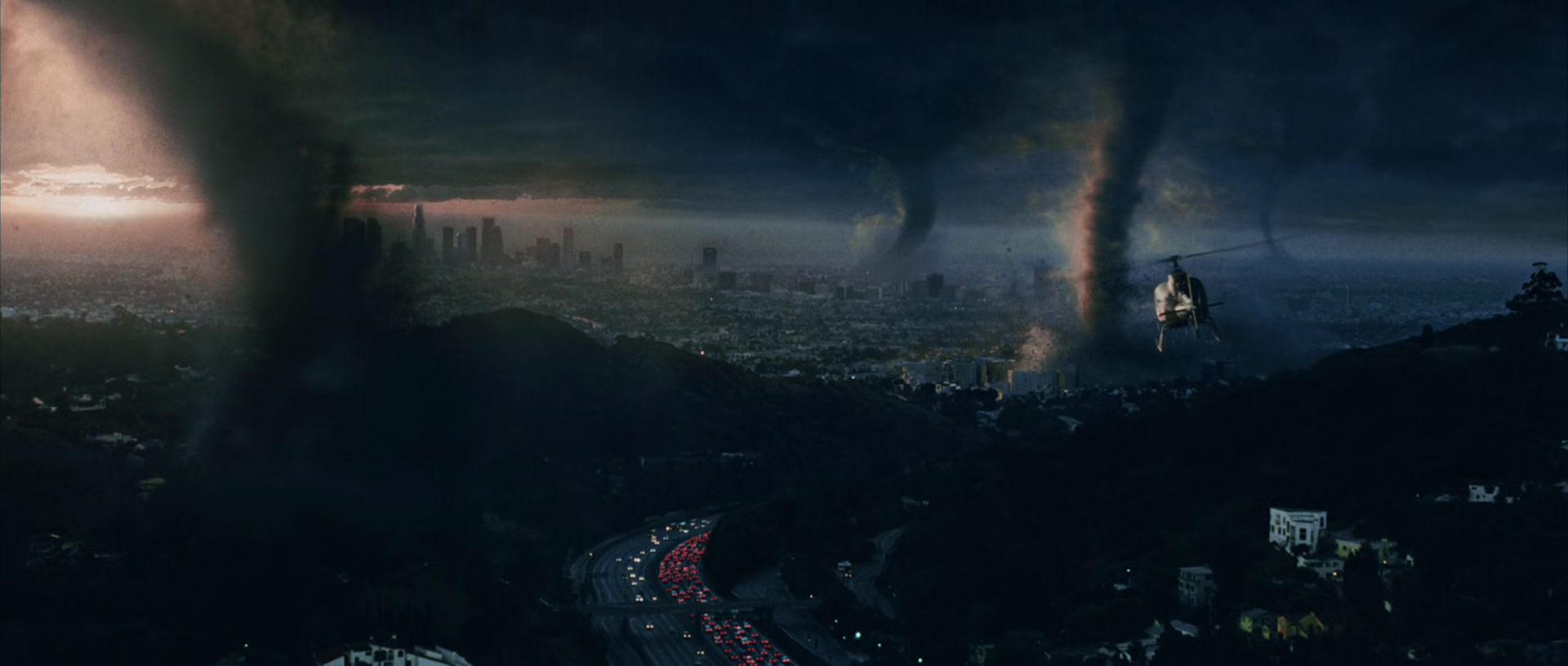 Did anyone call Bill Paxton or Helen Hunt about these things?
Did anyone call Bill Paxton or Helen Hunt about these things?
Science Gaffs:
1. The rapid onset of a new ice age in this movie is a little too rapid. We see a new ice age taking place in just a matter of days, whereas in reality, the onset of an ice age takes thousands of years.
2. The movie suggests that the Gulf Stream, a warm ocean current that helps regulate the climate, can shut down suddenly and completely and thus lead to an instant ice age. In reality, while a shutdown of the Gulf Stream would cause a cooling effect it would not cause an ice age to occur suddenly.
3. Tornadoes in Los Angeles are not really a thing. In the film, we see a massive tornado hit Los Angeles, which is highly unlikely since tornadoes typically form in areas with flat terrain and not in mountainous regions like Los Angeles.
4. The movie depicts massive tidal waves hitting New York City, which is another unlikely scenario since tidal waves, also known as tsunamis, are typically caused by earthquakes or underwater landslides, not by storms.
5. The movie suggests that the solution to the problem of a sudden ice age is to use helicopters to drop chemicals into the atmosphere, to supposedly reverse the effects of global warming, but this solution is both unscientific and unrealistic.
6. The movie depicts people surviving in extremely cold weather without proper clothing or shelter, which is also highly unlikely since exposure to extreme cold can lead to frostbite, hypothermia, and death.
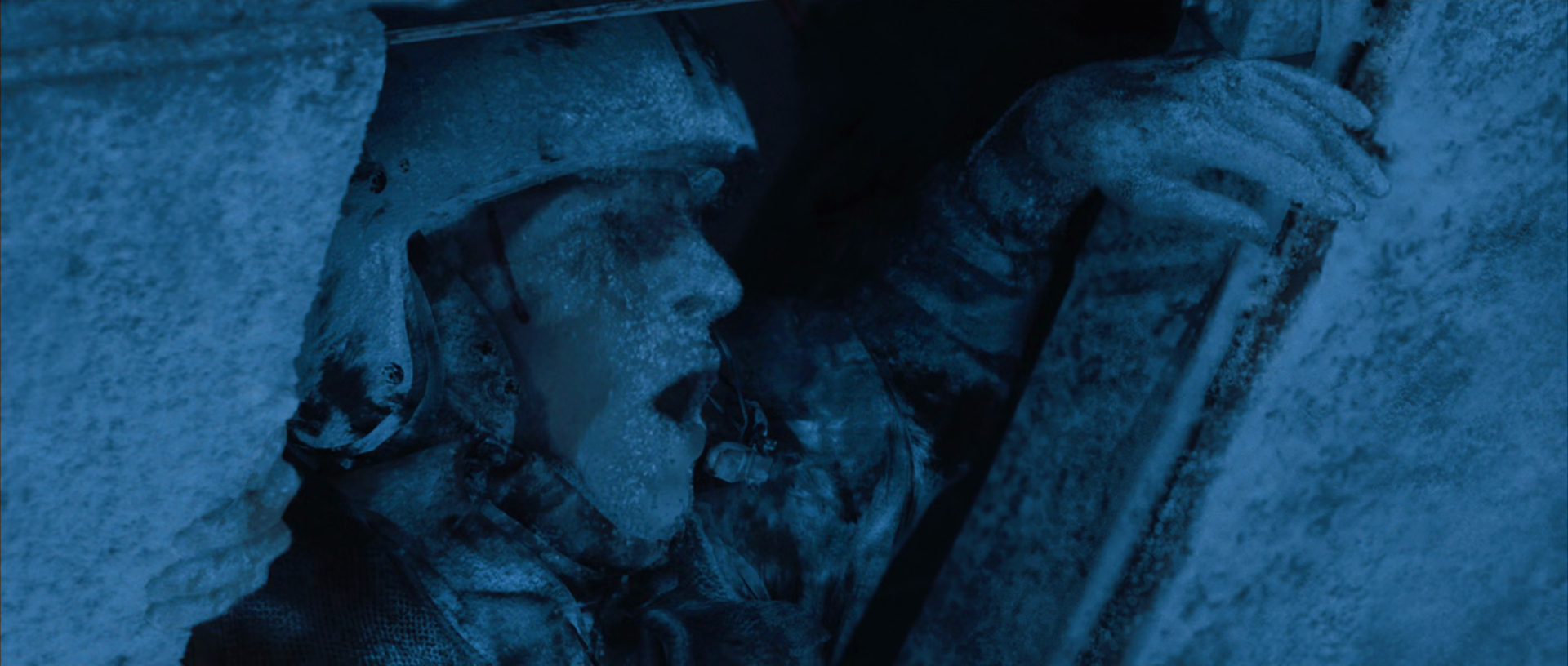 He froze faster than the T-1000 at the end of Terminator 2: Judgement Day.
He froze faster than the T-1000 at the end of Terminator 2: Judgement Day.
Needless to say, when it comes to science this film is not without its flaws with some of the scientific explanations varying from the far-fetched to the patently ridiculous, and even the plot itself can be a bit contrived at times, but those issues can be easily overlooked in the face of the film's impressive spectacle and strong performances.
Stray Observations:
• A high school competitive team from Virginia is sent to New York without a chaperone, in my school even a field trip across the street required supervision.
• In many disaster films we will get a character claiming how it’s impossible to evacuate the city in time, there are just too many people and it would cause mass panic, but in this movie we get them evacuating the entirety of Southern States in a matter of hours, with seemingly no problem at all.
• Sam tosses some books into the library fireplace to burn and when the librarian protests he asks “What else are we going to burn.” Strangely enough, no one points out that this place is full of wooden furniture, which would prove to be a helluva lot better fuel than paper.
• The cargo ship that floats down 5th Avenue must have some magical properties because the buildings on that street wouldn't provide enough space between them to allow a ship of that size to pass through.
• The Statue of Liberty’s skin is thinner than a penny and would not survive the kind of storm surge we see engulf it, and it certainly wouldn't have withstood the amount of ice we see hanging off of it later in the film.
• Dennis Quaid and his buddy are seen trudging by the frozen Statue of Liberty but as they came from Washington DC this means they somehow overshot New York and wandered out onto the frozen Atlantic before hooking back towards the coast.
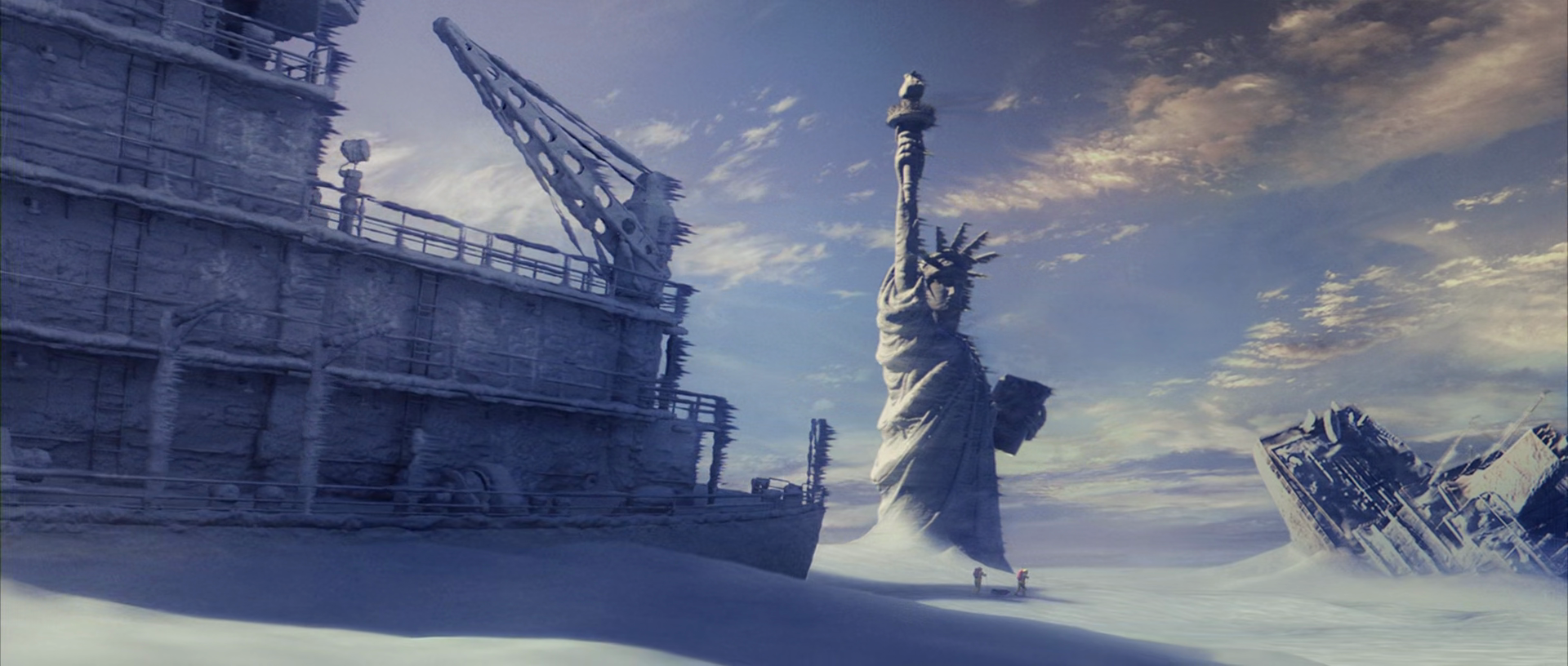 Maybe Quaid forgot to pack a compass?
Maybe Quaid forgot to pack a compass?
In the end, The Day After Tomorrow is a classic disaster movie that will keep you entertained and, possibly, make you question why you didn't study meteorology in college. But if you're looking for a realistic depiction of what would happen if the world suddenly froze over you might want to look elsewhere. Unless, of course, you're planning on building an igloo anytime soon.
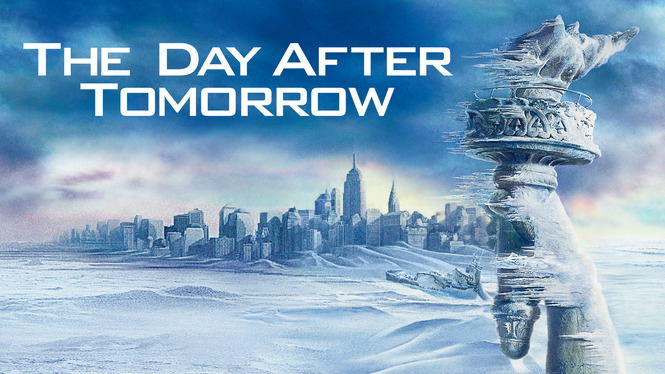
No comments:
Post a Comment